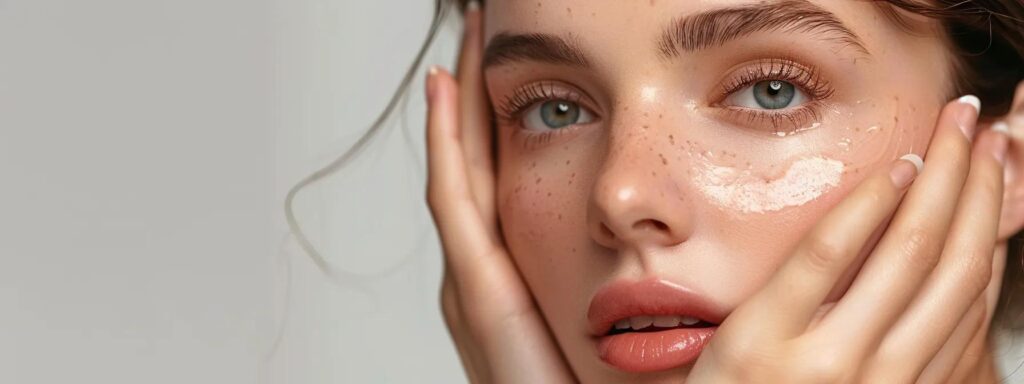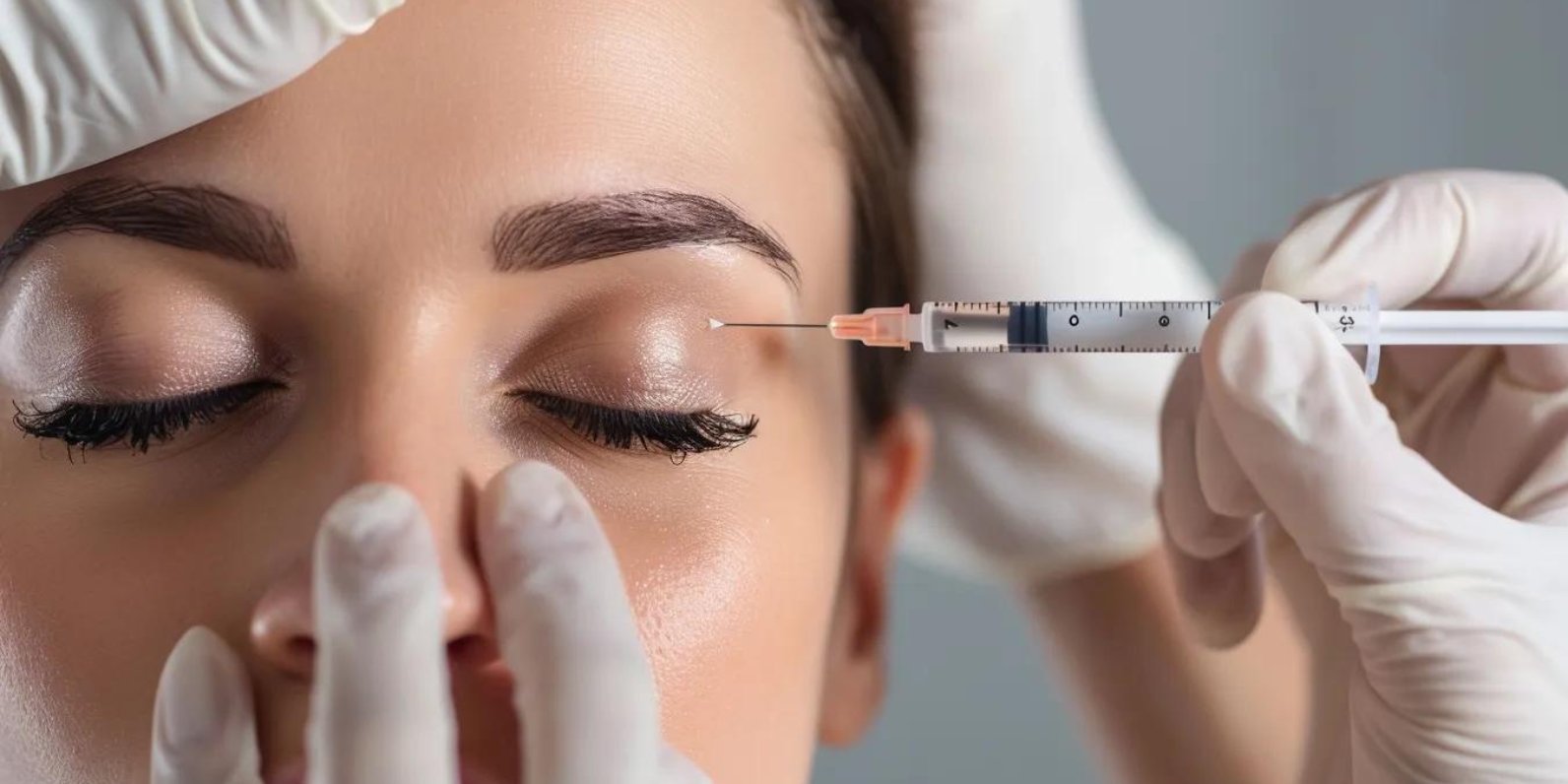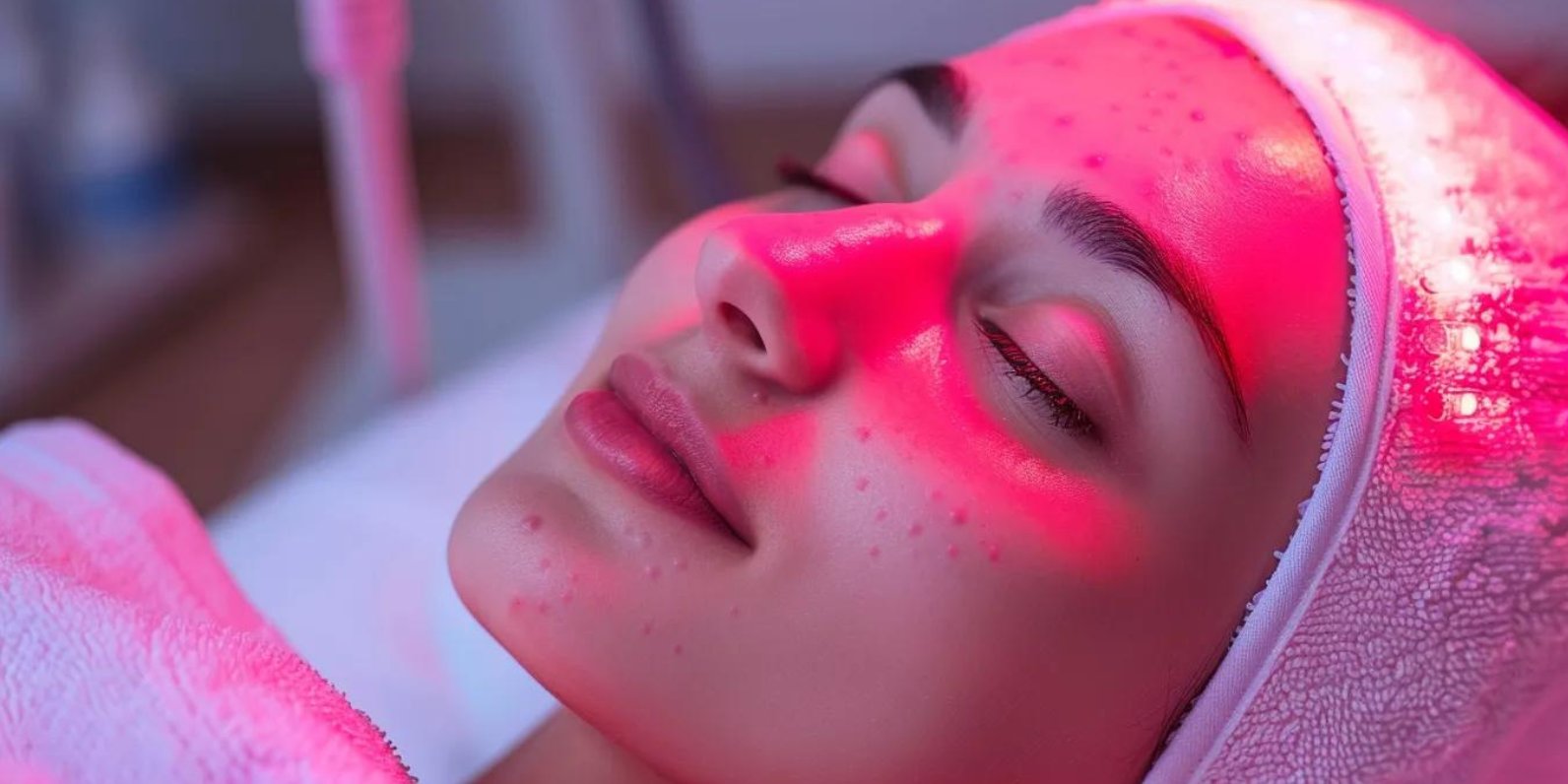Yes, retinol does help with skin texture by speeding up cell turnover and promoting smoother, more even skin. It works to unclog pores, reduce roughness, and support collagen production for a refined, healthier-looking surface.
What Is Retinol and How Does It Work?
Retinol is a form of vitamin A that your skin loves. It’s the first vitamin approved by the FDA as an anti-wrinkle agent that changes the appearance of skin surface. When you put retinol on your skin, it gets to work right away.
The process starts when retinol combines with specific proteins in your skin cells. Then, enzymes convert retinol to retinaldehyde, and finally to retinoic acid. This final form is what actually improves your skin.
The Science Behind Retinol’s Texture Benefits
Your skin naturally sheds old cells and makes new ones. But as you get older, this process slows down. Retinol speeds up skin cell turnover and helps slough away dead skin cells. By making the outermost layer of skin turnover faster, new cells can form, creating smoother, more even skin.
Retinoids also promote keratinocyte proliferation, strengthen the protective function of the epidermis, and protect collagen against degradation. Think of it like giving your skin a gentle push to work better.
How Retinol Improves Skin Texture
Smooths Rough Patches
Retinol works like a gentle renovation for your skin. It has an exfoliating effect on the skin’s surface that helps improve texture and tone. Over time, you’ll notice that rough, bumpy areas become smoother.
Reduces Pore Appearance
Retinol can help reduce the appearance of visible pores and help refine the skin’s texture. When your skin cells turn over faster, dead skin doesn’t get stuck in your pores. This makes them look smaller and your skin feel smoother.
Evens Out Skin Tone
Uneven texture often comes with uneven color. Retinoids fade actinic keratosis spots, even pigmentation, and speed the turnover of superficial skin cells. Your skin ends up looking more uniform in both texture and color.
Boosts Collagen Production
Retinoids reduce fine lines and wrinkles by increasing the production of collagen. More collagen means plumper, firmer skin with better texture. Studies show retinol treatments increase collagen synthesis and improve skin structure.
What the Research Says About Retinol and Skin Texture
The science supporting retinol for skin texture is solid. A 2015 study from the Journal of Cosmetic Dermatology found significant reduction in wrinkles after 12 weeks of retinol use, while a 2019 study showed improvement in eye and neck wrinkles after just 8 weeks.
In one clinical trial, 23 patients who used retinol for 24 weeks showed clinical improvement in fine wrinkles after just four weeks. Skin biopsies revealed increased collagen production and glycosaminoglycan expression.
Key Research Findings
A comparative study found that both retinol and retinoic acid increased epidermal thickness and boosted collagen production after four weeks of treatment. The exciting part? Clinical results showed that retinol treatment was as effective as retinoic acid for treating aged skin, with similar wrinkle reduction benefits.
Research on different retinol concentrations showed that higher concentrations (3300-6600 IU) had significantly better effects on wrinkles, dermal density, and pores, with faster improvement rates for skin texture.
Different Types of Retinoids for Skin Texture

Understanding your options helps you pick the right product for your skin goals.
Over-the-Counter Retinol
Retinol is widely available over the counter in serums, creams, and even some cosmetics. These products are gentler and perfect for beginners. Over-the-counter retinol is usually combined with other helpful ingredients.
Prescription Retinoids
Prescription retinoids contain higher concentrations of active ingredients, so you may see more significant changes to your skin faster. Prescription options include tretinoin (Retin-A), tazarotene (Avage, Tazorac), and adapalene (Differin).
Retinol Alternatives
If retinol seems too strong, there are gentler options:
- Retinaldehyde: More potent than retinol but less irritating than prescription retinoids
- Retinyl palmitate: Very gentle but takes longer to show results
- Bakuchiol: A plant-based retinol alternative that delivers similar anti-aging benefits with less irritation
How to Use Retinol for Better Skin Texture
Starting Your Retinol Journey
Begin slowly to let your skin adjust. If you’re new to retinol, start with once a week to see how your skin reacts. If your skin handles it well, increase slowly to two to three times per week after a couple of weeks.
The best time to use retinol is at night because it is sensitive to sunlight, which can reduce its effectiveness and make your skin more prone to sun damage.
Application Steps
- Wash your face with a gentle cleanser
- Wait for skin to dry completely
- Apply a pea-sized amount of retinol
- Wait a few minutes
- Apply moisturizer
The Moisturizer Sandwich Method
For dry or sensitive skin, try the moisturizer sandwich method: apply a thin layer of moisturizer, wait 30-60 seconds, add retinol on top, then finish with another layer of moisturizer.
What to Expect: Timeline for Texture Improvements
Week 1-2: Adjustment Period
In the first few weeks, it’s common to see dryness, flaking, redness, or breakouts. These signs mean your skin is adjusting, not reacting badly. Don’t give up!
Week 4-8: Early Changes
Clinical improvement in fine wrinkles can be seen after four weeks of treatment. Your skin might start feeling smoother to the touch.
Week 12+: Significant Results
By week 12, you may start to see a marked difference in your skin’s texture. It takes three to six months of regular use before improvements in wrinkles are apparent, and the best results take six to 12 months.
Combining Retinol with Other Ingredients
What Works Well with Retinol
Hyaluronic acid pulls water into your skin to keep it soft and smooth. Ceramides strengthen your skin and help it hold onto moisture. Niacinamide calms your skin and helps with redness and oil.
These ingredients can help reduce retinol irritation:
- Peptides: Help your skin make more collagen
- Resveratrol: Protects against damage and reduces irritation
What to Avoid
AHAs and BHAs (like glycolic or salicylic acid) are strong exfoliants. Using them with retinol can make your skin red and irritated. Vitamin C can be too much when combined with retinol.
Avoid these combinations:
- Benzoyl peroxide (can cancel out retinol)
- Strong scrubs or physical exfoliants
- Products with lots of fragrance or essential oils
Side Effects and How to Manage Them
Common Side Effects
People who use retinols commonly experience dry and irritated skin, especially after using a new product. Other effects include:
- Redness
- Flaking or peeling
- Increased sun sensitivity
- Initial breakouts
Managing Irritation
Because retinoids can cause skin dryness and irritation, doctors often recommend using them only every other day at first and then gradually working up to nightly applications.
To lessen side effects, try using your retinol every other night or every third night, and work your way up to using it nightly.
Who Should Use Retinol for Skin Texture?
Good Candidates
A skin product that contains retinoids is a good option for someone with mild acne, mild pigmentation irregularities, or mild fine lines and wrinkles.
Retinol works well if you have:
- Rough skin texture
- Large-looking pores
- Uneven skin tone
- Early signs of aging
- Acne-prone skin
Who Should Avoid It
People who have skin allergies or dryness are probably not good candidates for retinoids. If someone has a lot of redness or inflammation in their skin, they should avoid retinoids.
People on photosensitizing medications should avoid retinol because it increases sun sensitivity. It’s also not recommended for people with inflammatory skin conditions like rosacea or for cancer patients on active chemotherapy.
Retinol Concentrations: Finding Your Sweet Spot
Low Concentration (0.25-0.5%)
Perfect for beginners or sensitive skin. Low concentration retinol (1500-2500 IU) had significantly higher effects in skin color, brightness, and elasticity with faster improvement rates compared to high concentration.
Medium Concentration (0.5-1.0%)
Good for those who’ve used retinol before and want stronger results.
High Concentration (1.0%+)
High concentration retinol had significantly higher effects in wrinkles, dermal density, and pores with faster improvement rates for wrinkles, skin texture, pores, and desquamation.
Retinol concentration in cosmetic products ranges between 0.0015% and 0.3%, with the optimal concentration to balance skin irritation against effectiveness not yet determined.
Professional Treatments vs. At-Home Retinol
At-Home Retinol Benefits
- More affordable long-term
- Convenient daily use
- Gentler introduction to retinoids
- Available without prescription
Professional Options
If over-the-counter retinol isn’t giving you the results you want, consider professional treatments at FACE Skincare Medical Wellness. Professional options include:
- Chemical Peels: Deep exfoliation for dramatic texture improvement
- Microneedling: Stimulates collagen production for smoother skin
- Morpheus8: Combines microneedling with radiofrequency for advanced texture improvement
Special Considerations for Different Skin Types
Sensitive Skin
Start with the lowest concentration possible. Look for retinol products with soothing ingredients like niacinamide or ceramides. Consider professional facials to prep your skin.
Oily/Acne-Prone Skin
Retinol is beneficial for those with acne-prone skin as well. It can help keep your skin clear and improve the appearance of post-acne marks. You might tolerate higher concentrations better.
Mature Skin
Focus on products that combine retinol with hydrating ingredients. Consider professional treatments like Botox for deeper lines alongside retinol for texture.
Skin of Color
Retinol can be especially helpful for addressing post-inflammatory hyperpigmentation. Start slowly and always use sunscreen, as darker skin can be more prone to discoloration from irritation.
The Importance of Sun Protection
Wear sunscreen during the day because retinoids increase the skin’s sensitivity to sunlight. Retinoic acid can increase sensitivity to sun and a broad spectrum SPF 30+ must be part of your daily morning routine.
This isn’t optional – it’s essential. Without proper sun protection, retinol can actually make your skin worse. UV damage can undo all the good work retinol is doing for your texture.
Best Sunscreen Practices
- Use SPF 30 or higher every day
- Reapply every 2 hours
- If you have sensitive skin, look for a physical sunscreen containing titanium dioxide and/or zinc oxide
- Don’t forget your neck and hands
Common Myths About Retinol and Skin Texture
Myth: Retinol Thins Your Skin
Truth: Both retinol and retinoic acid treatments increased epidermal thickness. Retinol actually makes your skin stronger, not thinner.
Myth: You Can’t Use Retinol During the Day
Truth: While nighttime is better, the key is sun protection. The best time to use retinol is at night because it is sensitive to sunlight, but if you use proper SPF, morning application isn’t dangerous.
Myth: Expensive Retinol Works Better
Truth: For over-the-counter products, there’s no standard requirement that the percentage of retinol be disclosed on the label. Price doesn’t always equal effectiveness.
Myth: Retinol Stops Working Over Time
Truth: These drugs must be used continually to maintain their benefits. Your skin doesn’t build tolerance – consistent use maintains results.
Troubleshooting Common Retinol Problems
“My Skin Looks Worse”
This might be the “retinol purge.” You may still see pimples for the first couple of months of treatment – your skin might even look worse. But if you stick with it, you’ll see clearer skin.
“I’m Not Seeing Results”
Many who use retinol and don’t see quick results wonder, “does retinol work?” The answer is yes, but if you’re looking for an overnight treatment, you won’t find it in retinol.
Be patient. Results take time, and consistency is key.
“My Skin is Too Irritated”
Scale back immediately. If you notice redness, dryness, or peeling, scale back. Use it less often, and apply a moisturizer before or after to minimize irritation.
Advanced Retinol Strategies for Maximum Texture Benefits
Cycling Method
Use retinol for 4-6 weeks, then take a 1-week break. This can help prevent irritation while maintaining benefits.
Progressive Strength Approach
Start with 0.25%, use for 3 months, then move to 0.5%. This gradual increase helps your skin adapt while maximizing results.
Combination Therapy
Work with professionals to combine retinol with treatments like HydraFacial or chemical peels for enhanced texture improvement.
When to See a Professional
Consider consulting a dermatologist or visiting FACE Skincare Medical Wellness if:
- Over-the-counter retinol isn’t giving you results after 6 months
- You experience severe irritation
- You have specific skin concerns that need professional treatment
- You want to combine retinol with professional procedures
Professional treatments can accelerate your results and provide customized solutions for your skin texture goals.
Cost-Effective Retinol Routines
Budget-Friendly Approach
- Start with drugstore retinol (0.25-0.5%)
- Use a simple moisturizer and cleanser
- Invest in good sunscreen
- Be consistent rather than buying expensive products
Mid-Range Investment
- Quality retinol serum (0.5-1.0%)
- Supporting products with ceramides and niacinamide
- Professional consultation once yearly
Premium Approach
- High-end retinol with complementary ingredients
- Regular professional treatments
- Customized skincare routine
- Advanced sun protection
The Future of Retinol and Skin Texture
Novel delivery systems based on nanotechnology are being developed to overcome retinol’s limitations like instability, low penetration, and potential for skin irritation.
Nanoparticles have shown good potential in improving the stability, tolerability, and efficacy of retinoids like retinol. This means future retinol products may be more effective and less irritating.
Final Thoughts
Yes, retinol absolutely helps with skin texture. The science is clear: topical retinoids have demonstrated promise in enhancing skin texture, diminishing fine lines, and augmenting the thickness of both epidermal and dermal layers.
The key to success with retinol is patience and consistency. Start slowly, protect your skin from the sun, and give it time to work. Most people see real improvements in skin texture within 3-6 months of regular use.
Remember, everyone’s skin is different. What works for your friend might not work for you. If you’re unsure about starting retinol or need help troubleshooting problems, consider consulting with skincare professionals who can guide you based on your specific needs.
Ready to start your retinol journey? Begin with a low concentration, be consistent, and most importantly, be patient. Your smoother, more refined skin texture is worth the wait.
For personalized retinol recommendations and professional skin texture treatments, schedule a consultation with the experts at FACE Skincare Medical Wellness today.







